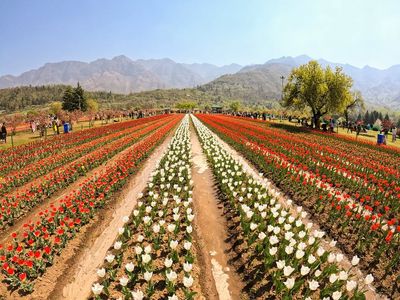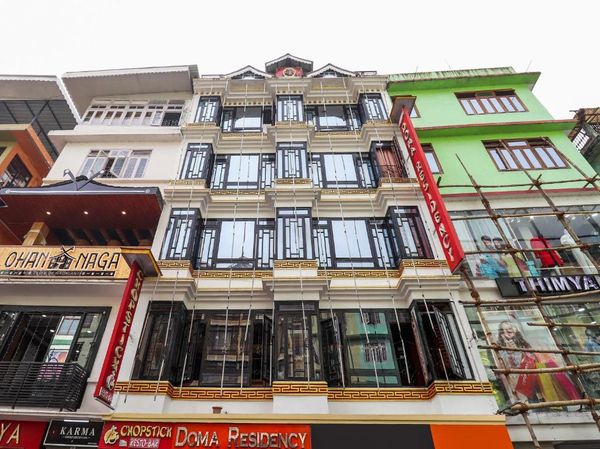Follow the Bloom: Best Times and Places for Flower-Filled Adventures in India
 Deepanshu Negi
28 Jul, 2025
9 mins read
107
Deepanshu Negi
28 Jul, 2025
9 mins read
107

India is a land of diverse seasons and rich landscapes. From the snow-covered Himalayas to the sun-drenched southern hills, the country is home to many beautiful flowers that bloom throughout the year. If you love nature, photography, or just peaceful walks among blossoms, India has something special for you. This guide will help you explore the best times and places to enjoy nature’s colorful shows.
Why Flower Blooming Seasons Matter
Flower blooms don’t happen randomly. They follow nature’s rhythm, which depends on climate, rainfall, and altitude. In India, different flowers bloom at different times of the year in different regions. Knowing when and where to go can make your travel more meaningful and enjoyable.
Spring Blooms (February to April)
Spring is one of the best seasons to witness flower blooms in India. The weather is pleasant, and many flowers begin to blossom after winter.
1. Valley of Flowers, Uttarakhand
This UNESCO World Heritage site is one of the most famous flower destinations in India. Although the best time to visit is in the monsoon (July to September), some early blooms start appearing in late spring. Located in the Chamoli district, this high-altitude valley turns into a colorful carpet with blue poppies, orchids, primulas, and marigolds.
Travel Tip: Be ready for a short trek. The area is part of a national park and not accessible by vehicle.
2. Tulip Garden, Srinagar, Jammu and Kashmir
Asia’s largest tulip garden, the Indira Gandhi Memorial Tulip Garden, opens only for a few weeks in late March or early April. Set against the backdrop of the Zabarwan Hills with Dal Lake nearby, the garden is a treat for the eyes. Over 1.5 million tulips bloom in different colors.
Travel Tip: Check official dates before planning. The garden’s opening depends on weather.
3. Shillong, Meghalaya
In spring, Shillong starts to fill with rhododendrons and other native flowers. The climate is cool and perfect for walking around the city’s gardens and trails. Shillong is also known for its cherry blossoms which begin to show light pink hues in late spring.
Summer Blooms (May to June)
Summer in many parts of India is hot, but some hill stations and high-altitude regions offer cooler escapes with lovely flower scenes.
4. Yumthang Valley, Sikkim
Known as the “Valley of Flowers of the East,†Yumthang is a paradise of rhododendrons and alpine flowers. May and early June are the best months to visit before the monsoon hits. Surrounded by snow-capped mountains, the valley offers a mix of colors like pink, yellow, purple, and white.
Travel Tip: Roads may be blocked due to landslides in extreme weather. Check before you go.
5. Kodaikanal, Tamil Nadu
Kodaikanal is known for the rare Kurinji flower, which blooms once every 12 years. But even without the Kurinji, the region has many other summer blooms. From hydrangeas to dahlias and lilies, Kodaikanal’s botanical gardens are a great place to enjoy flowers in a cooler climate.
Monsoon Blooms (July to September)
While monsoon can be tricky for travel, it's when many places turn green and start blooming. It’s nature at its most active stage.
6. Valley of Flowers, Uttarakhand (again!)
This is the peak bloom time for the Valley of Flowers. By mid-July, the valley comes alive with thousands of flowers. You’ll see blue poppies, cobra lilies, and countless species native to the Himalayas. Reaching this natural wonder involves a beautiful 5-6 day trek in Uttarakhand, India, making the journey just as rewarding as the destination.
Travel Tip: Wear proper trekking shoes and carry rain gear.
7. Munnar, Kerala
Munnar is known for the Neelakurinji flower, which blooms once in 12 years (last in 2018, next in 2030). But apart from that, the tea gardens and hills of Munnar are filled with wildflowers during monsoon. Orchids, anthuriums, and begonias are common sights.
Autumn Blooms (October to November)
Autumn is a short but sweet blooming season in India. The rain has gone, and the weather is fresh. It's also a great time for festivals and flower shows.
8. Kaas Plateau, Maharashtra
Also called the "Valley of Flowers of Maharashtra," Kaas Plateau is a UNESCO Biodiversity Site. Over 850 species of flowering plants bloom here, especially between late August and early October. Pink balsams, yellow smithia, and white wildflowers cover the plateau.
Travel Tip: Visitor numbers are limited to protect the area. Book in advance.
9. Ziro Valley, Arunachal Pradesh
This less-known destination in northeast India turns lush in autumn. The paddy fields start to turn golden, and wildflowers line the trails. The mix of culture and nature makes Ziro a peaceful place to enjoy simple beauty.
Winter Blooms (December to January)
Winter may seem dull, but some places in India still offer floral joy.
10. Rose Garden, Chandigarh
Asia’s largest rose garden, Zakir Hussain Rose Garden, is a winter attraction. With over 1,600 varieties of roses, the garden is best viewed from late December to February. The annual Rose Festival is held here, attracting visitors from all over India.
11. Bangalore, Karnataka
The city is known as the “Garden City of India†and lives up to its name even in winter. The famous Lalbagh Botanical Garden holds a flower show every Republic Day in January. You’ll find a range of seasonal blooms including pansies, petunias, and chrysanthemums.
Tips for Flower Lovers
- Check local weather: Blooming times can vary slightly based on temperature and rainfall.
- Carry a camera: Whether it’s a DSLR or a phone, flower fields make great photos.
- Respect nature: Don’t pick flowers or step on flower beds. Many of these are protected zones.
- Dress right: Comfortable shoes, a hat, and water bottle will help you enjoy your trip more.
Final Thoughts
India has a flower for every season and a place for every nature lover. Whether you're hiking in the hills of Sikkim or strolling through a rose garden in Chandigarh, flowers bring color and peace to any journey. By planning your trip around the blooming seasons, you can make your travels more vibrant and memorable.
So go ahead, follow the bloom, and let nature guide your next adventure.
Written By:
Deepanshu Negi



Hotels at your convenience
Now choose your stay according to your preference. From finding a place for your dream destination or a mere weekend getaway to business accommodations or brief stay, we have got you covered. Explore hotels as per your mood.


